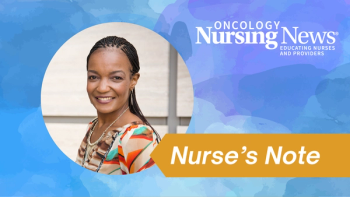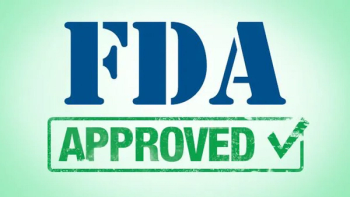
- June 2017
- Volume 12
- Issue 5
Educating Patients About Oral Oncolytic Agents
Open communication and reinforced education are the keys to success in helping patients to manage their oral oncolytic regimens.
Eric Vachon, BSN
Chemotherapy is most often administered intravenously (IV) by trained oncology nurses in a clinical setting. However, the continued development and FDA approval of oral oncolytic agents (OOA) has brought about a paradigm shift in cancer treatment. With about 30% of chemotherapy in the development pipeline and being prescribed, many medications are moving from the clinical setting to the patient’s home.1
This shift in setting also brings about a shift in responsibility, from the clinician to the patient. When being prescribed OOA, patients are now required to self-manage medications and symptoms, more so than when receiving IV chemotherapy. This requires clinicians to provide a higher standard strategies to empower patients and caregivers to be utilize successful in managing and adhering to medication regimens.2
For patients with solid tumors, an OOA prescription is typically the result of disease progression, whereas for patients with hematologic malignancies, an OOA may be prescribed for a new diagnosis as a first line of treatment.3,4 and access them.8 Some patients may not have insurance, or their insurance may not cover specific OOAs. This may require connecting patients with care management or social work in order to provide them with resources to pay for medications.
ORAL ONCOLYTICS PATIENT COUNSELING POINTS
The following topics are just a few of the primary education components that should be discussed with patients who are prescribed oral oncolytic agents (OOA):
✓ Medication adherence
✓ Regimen complexity (eg, continuous vs cycling dosing schedules)
✓ Cost of OOA and assistance
✓ Pharmacy access and refills
✓ Safe handling and disposing of OOA
✓ Management of side effects, including supportive drugs (eg, antiemetics) Food and drug interactions
This shift in setting also brings about a shift in responsibility, from the clinician to the patient. When being prescribed OOA, patients are now required to self-manage medications and symptoms, more so than when receiving IV chemotherapy. This requires clinicians to provide a higher standard strategies to empower patients and caregivers to be utilize successful in managing and adhering to medication regimens.2
At the initial oncology visit, when patients with cancer are newly prescribed OOA, they receive a substantial amount of education. However, due to the nature of the situation, it can be extremely stressful and difficult for them to fully comprehend all the information given. For these reasons, clinicians—especially oncology nurses—should be providing continued and sustained patient education at each clinic visit (Box).
Barriers to Adherence
With more of the responsibility for medication and symptom management placed on patients, it is the responsibility of the oncology nurse to educate and provide strategies to effectively self-manage OOA regimens. We want them to be successful, and that begins with discussing the importance of adherence. Patients need to maintain a certain level of adherence for the medications to be efficacious, but a myriad of barriers exist.5,6 Regimen complexity may have a substantial impact on adherence, for example.7 Regimens may be as simple as 1 pill once per day, or multiple medications with 1 being taken every day, while the other being taken 21 days on, 7 days off.
“Among the potential barriers to adherence are regimen complexity, cost, side effects, and possible drug—drug interactions.”
Oral oncolytics also can be extremely expensive, makin it difficult for patients to afford and access them.8 Some patients may not have insurance, or their insurance may not cover specific OAs. This may require connecting patients with care management or social work in order to provide them with resources to pay for medication.
Unlike most medications, an OOA prescription cannot be simply filled at the local pharmacy. Specialty pharmacies or mail order pharmacies are needed to access these medications. It is important to discuss these special circumstances with patients at the time of the initial prescription and throughout their cancer care.
The Keys to Success
Once patients are able to access their medications, nurses can deploy strategies and share important information to help them be successful with their oral regimens. Importantly, patients need to take certain steps to properly handle OOAs in order to keep themselves and their families safe. Tips for safe handling of OOAs include9,10:
- Patients should administer theirown medications, but if a caregiver or loved one is doing so, they should wear gloves
- These agents should not be chewed, crushed, or dissolved
- Avoid spread of bodily fluids, especially urine or saliva.
Much like IV chemotherapy, OOAs can bring about severe adverse events. It is important to talk with patients about common side effects associated with their OOA, such as fatigue, nausea, vomiting, diarrhea, and skin reactions, and provide strategies for self-management of symptoms or when patients should contact a provider.
Most patients not only take their OOAs, but also supportive care drugs or medications for other chronic conditions.11 Educating patients on the importance of possible drug—drug interactions, or which foods/liquids to avoid, can aid in making sure OOA drug levels are not increased or decreased and for decreasing possible toxicities.12
Patients newly prescribed OOA are in a particularly vulnerable situation. Oncology nurses are at the front line for patient education. Nurses play a critical role in making sure patients understand the information being discussed with them when OOA therapy is initiated, but also at subsequent visits. Open communication and reinforced education are the keys to success in patients managing OOA regimens, and oncology nurses are the perfect facilitators to make this happen.
References
1. Bassan F, Peter F, Houbre B, et al. Adherence to oral antineoplastic agents by cancer patients: definition and literature review. Eur J Cancer Care. 2014;23(1):22-35.
2. Arber A, Odelius A, Williams P, et al. Do patients on oral chemotherapy have sufficient knowledge for optimal adherence? A mixed methods study. Eur J Cancer Care. 2017;26(2). doi: 10.1111/ecc.12413.
3. Ruddy K, Mayer E, Partridge A. Patient adherence and persistence with oral anticancer treatment. CA Cancer J Clin. 2009;59(1):56-66.
4. Hall AE, Paul C, Bryant J, et al. To adhere or not to adhere: Rates and reasons of medication adherence in hematological cancer patients. Crit Rev Oncol Hematol. 2016;97:247-262.
5. Accordino MK, Hershman DL. Disparities and challenges in adherence to oral antineoplastic agents. Am Soc Clin Oncol Educ Book. 2013;271-276.
6. Verbrugghe M, Duprez V, Beeckman D, et al. Factors influencing adherence in cancer patients taking oral tyrosine kinase inhibitors: a qualitative study. Cancer Nurs. 2016;39(2):153-162.
7. George J, Phun YT, Bailey MJ, et al. Development and validation of the medication regimen complexity index. Ann Pharmacother. 2004;38(9):1369-1376.
8. Lee C, Grigorian M, Nolan R, et al. A retrospective study of direct cost to patients associated with the use of oral oncology medications for the treatment of multiple myeloma. J Med Econ. 2016;19(4):397-402.
9. Esper P. Identifying Strategies to Optimize Care With Oral Cancer Therapy. Clinical journal of oncology nursing. 2013;17:629-36.
10. Bettencourt E. Oral chemotherapy—What Your Patients Need to Know. Association of Community Cancer Centers. 2014.
11. Williams GR, Mackenzie A, Magnuson A, et al. Comorbidity in older adults with cancer. J Geriatr Oncol. 2016;7(4):249-257.
12. Given BA, Spoelstra SL, Grant M. The challenges of oral agents as antineoplastic treatments. Semin Oncol Nurs. 2011;27(2):93-103.
Articles in this issue
over 8 years ago
Emerging BTK Inhibitor Tested in B-Cell Malignanciesover 8 years ago
June Adverse Events Report: FDA Labeling Changesover 8 years ago
Forging an Emotional Connection With Our Patientsover 8 years ago
Fast Facts for the Front Line: Skin Cancer and Sun Protectionover 8 years ago
Clamping Down on Unproven Cancer Treatment ProductsNewsletter
Knowledge is power. Don’t miss the most recent breakthroughs in cancer care.
















































































